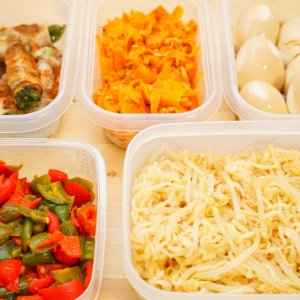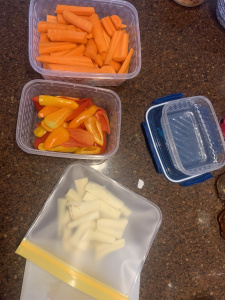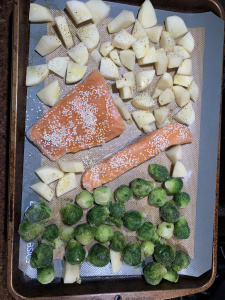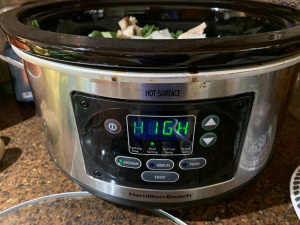Buy back time in the kitchen--in just 15 minutes
How do you buy back time in the kitchen when you don't have time to cook? Or time to prep? Or when you work long hours? Or what about when you're fielding kids and family to sporting events? How do you stay out of the fast food line, off of the "order in" apps and stay on track during these times? The answer is all in how you organize yourself--especially in regards to how you bring food into your house and what you do with it once its in your house. Today, we're sharing with you some science-based hacks for maximizing the time that you do have in the kitchen.

Recent consumer behavior research shows that Americans who are choosing to cook at home are doing so because they want to feel better, stay healthy and save money. Whether you have an hour or less to prepare meals for yourself or your family each day, consider the following statistics:
- Based on 2020 data, the average household is wasting almost 32% of their food purchases
- Americans are estimated to spend more money in food that is wasted ($1300/person/year) than they do on purchasing gas each year ($1250/person/year)
- Eating at home 5 or more times/week has been associated with having a normal range body mass index
If you're serious about reversing these trends, consider spending 15 minutes on these time saving kitchen tips:

1. When you make a shopping list, save it for later and use it again. People typically purchase the same items from week to week and month to month. Monitor how fast your family runs through household staples like whole grains, cereals and canned goods. Consider placing these items on a repeat order where ever you purchase groceries.
2. After the groceries are home, categorize them immediately into bins. Put shelf-stable snacks directly into the containers where they will be consumed. For some individuals and families, this is in a backpack, briefcase, lunch box or pantry, but don't forget to portion them out in to the empty storage units that you continuously fill. We prefer to use BPA-free, reusable, food grade silicone baggies like you see here below.

3. Chop and wash produce before placing them into your refrigerator. Place them at eye level for easy grabbing and snacking. Consider investing in a food processor or produce chopper attachment for a standing mixer to make this process even faster depending on the volume of produce you need to prepare.

4. Utilize a recipe rotation from week to week. Utilize the same recipes from month to month and add the ingredients to your re-occuring standing shopping lists to avoid the mental fatigue that comes with continuously deciding, "What's for dinner?"

5. Find boil, crockpot, roast and grill times in your week ahead. We strongly encourage individuals and families to continously look ahead at their upcoming week to find "pockets" of time for prepping the most labor intense ingredient of most meals: the protein! If you can use these pockets of down time to prepare the protein, you've unlocked a time saving treasure box! We prefer to crockpot a meat overnight, grill while the kids are showering after practice, roast a chicken while a load of laundry has started on the weekend, and to boil eggs for snacking on later while we open mail in the afternoons. This allows us to get ahead of the next two meals and have the protein prepped. It just takes 15 minutes of planning to find these "pockets" of time.

Meal planning can be daunting. It is a learned skill as is cooking, balancing a meal or snack and refueling after exercise. We're here to help you make these choices and to support you in your unique capabilities, lifestyle and health goals!

 RSS Feed
RSS Feed